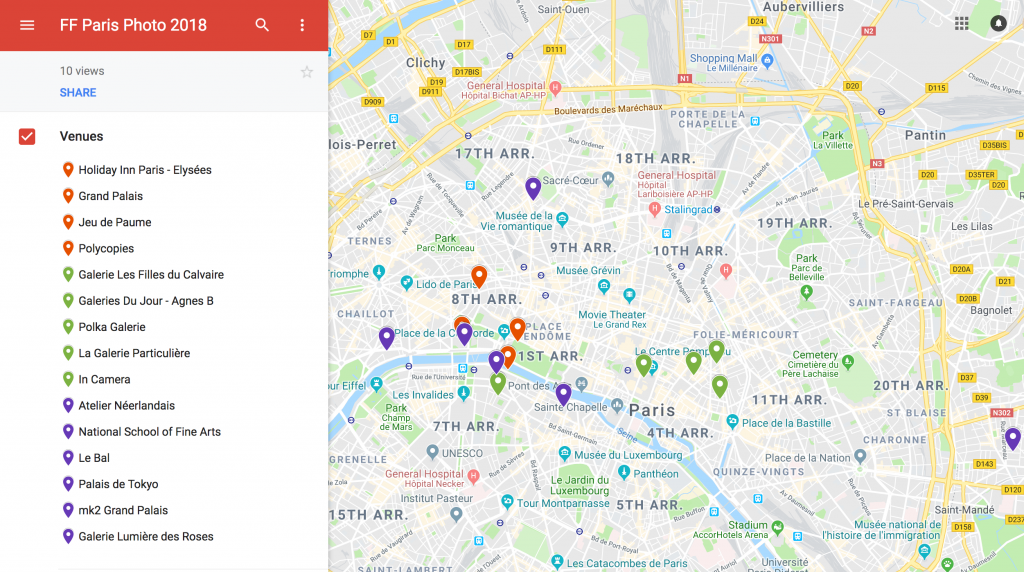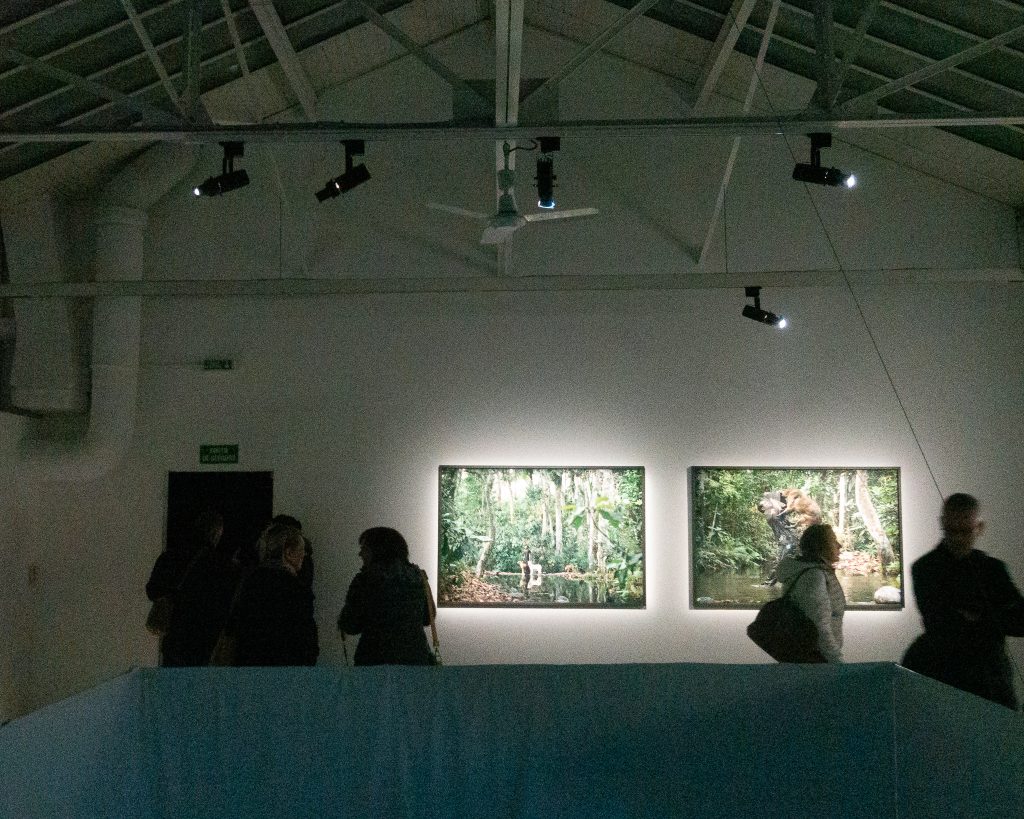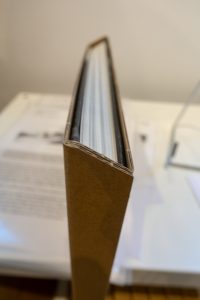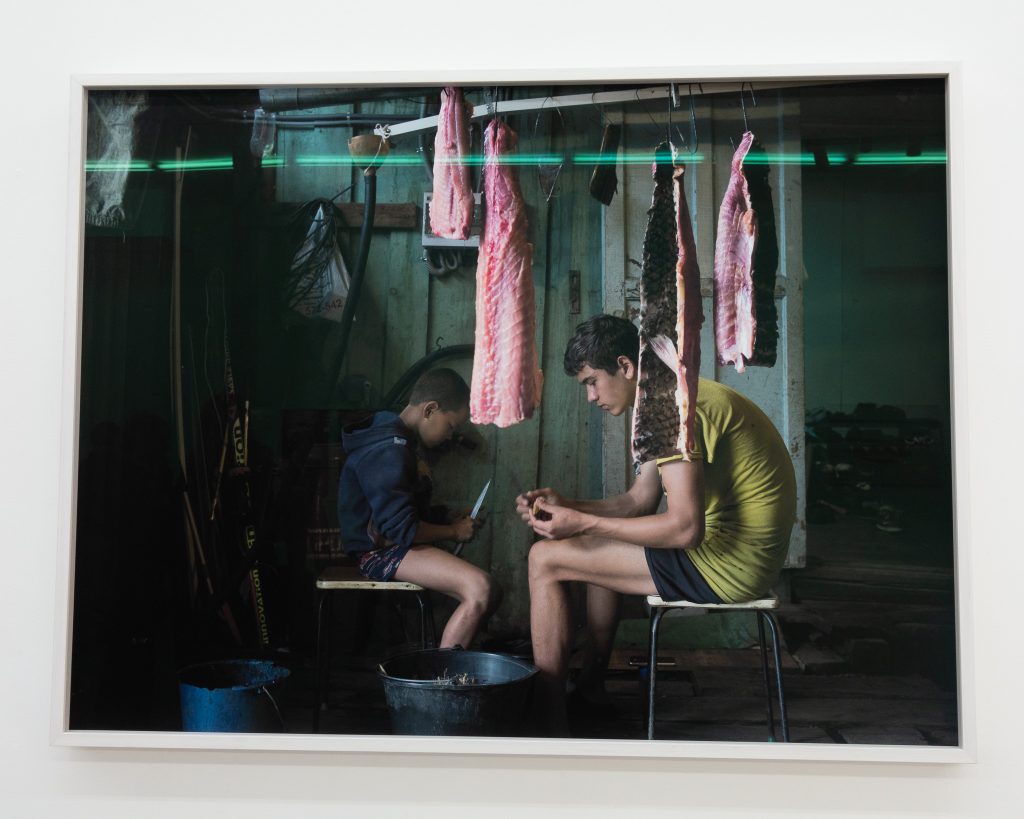Friday 9.11.18
A quick reflection on the days activities, principally to list the galleries visited whilst fresh. One immediate impression is the quality of gallery space around the Marais district, and the diversity of work exhibited. In the order visited.

Gallerie Les Filles du Calvaire to see Laura Henno’s M’Tsamboro, photographs and films made in Comoros.

In the lower gallery was a dual screen film exploring the role of children in illegal migration. In the upper gallery, photographs and films (one three channel in the gallery, the other single channel in a side room, but open so that the shouts from the film permiate the gallery space) focussing on the use of dogs as protection. The still images were lit from above with spots, giving them the appearance of light boxes in the darkened space (necessary for the video projections). The video and still images worked well together with clear thought given to the sonic landscape (see early posts about paying attention to sound in exhibition). In particular, the handling of illumination of still images alongside projection worked very well (all natural light was excluded, so light was entirely designed).
&CO119. Ango by Sakiko Nomura. A small gallery off a courtyard. Not immediately obvious from the street (sign outside, but we had to tailgate someone to get in).

Specialising in Japanese photographers, with a good selection of books. Brilliant exhibition by a student of Araki. Text from 1942 with contemporary staged grainy black and white photographs (with different women representing the same women in the text, thus despecifying the experiences described). Beautiful book (limited edition in French, standard edition in English, German and Japanese). Very striking offset binding.

Not sure how that was achieved so will investigate with Simon at London Book Arts (its the cutting of the pages and the covers, not the binding, which is standard).
La Galerie Particulaire. Claudine Doury, Le long du fleuve Amour.

Some great contextualised portraits here from along the Amur River. Interesting zig-zag double sided mounting of prints in perspex, held together by metal clips.

Could be a good way of exhibiting material that is also presented in zig-zag book form.
Eric Hussenot. Sur Face by Martin d’Orgeval.

Huge white walled space, with natural light from above. Upper and lower galleries. Large prints. Monochrome and two tone.
Polkagalerie. Small gallery on the street leads to larger two floor gallery off the courtyard at the back. Large exhibition by Joel Meyerowitz. Pretty much what you would expect. The large size of some of the Empire State shots was a surprise (with clear long exposure blur on the one with the woman on the corner by the convenience store). More interesting exhibition in the front gallery of contemporary work by Toshio Shibata on the dwindling stocks of Cibachrome. Mix of small, tightly framed and mounted contact prints (I assume) and larger prints without mounts (drawing attention to the nature of the print).
Galerie Templon. Large exhibition on two floors by David Lachappelle, Letter to the World. Large exhibition of work, including Kardashian installation.
écal MA in Photography pop-up exhibition. Encountered by chance.

Interesting exhibition of augmented photography by masters students. Some CGI and lot of post-processing. Two floors, with projection spaces downstairs. Will write something further about
Jeu de Paume. Dorothea Lange and Ana Mendieta. The Lange exhibition is the one that was shown at the Barbican (though difference configuration – the Barbican had a clearer spatial structure), so good to revisit and spend time looking at things missed first time around. The volume, scope and humanity of the work is striking. Ana Mendieta’s work is more conceptual and personal, though through this some big issues are addressed.
As with a number of other exhibitions recently, the use of long, holding shots on film/video was notable. These demand the attention of a still, but determine duration, and in some cases where there is some movement, pace. I wonder, in a space that contains large scale projected video, and photographic prints, how much attention is paid to the latter? The Laura Henno exhibition appears to address this effectively through the dramatic lighting of the still images (brighter and more vibrant than the projected video) and spatial arrangement (between one video and another). The video also provides the soundscape for the exhibition.
